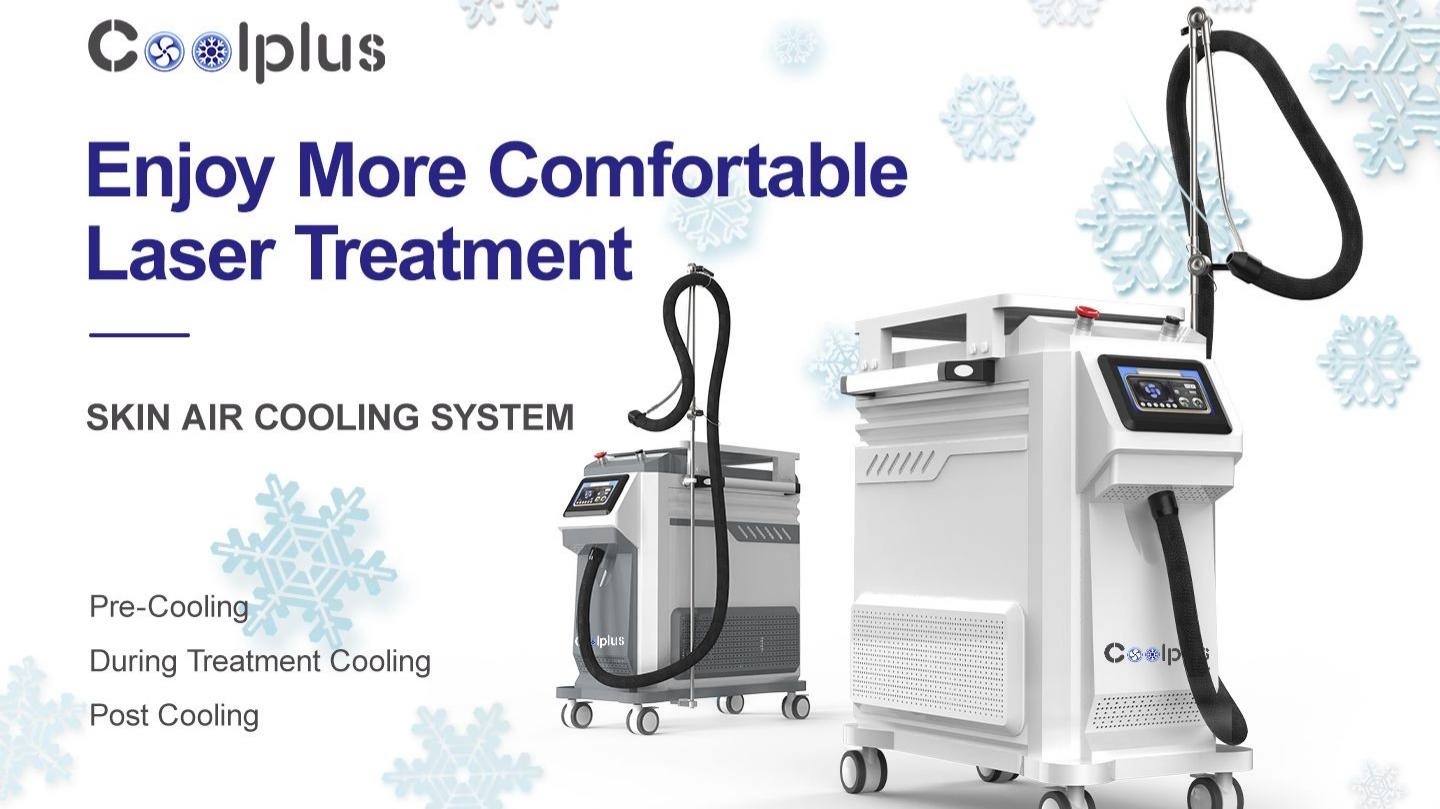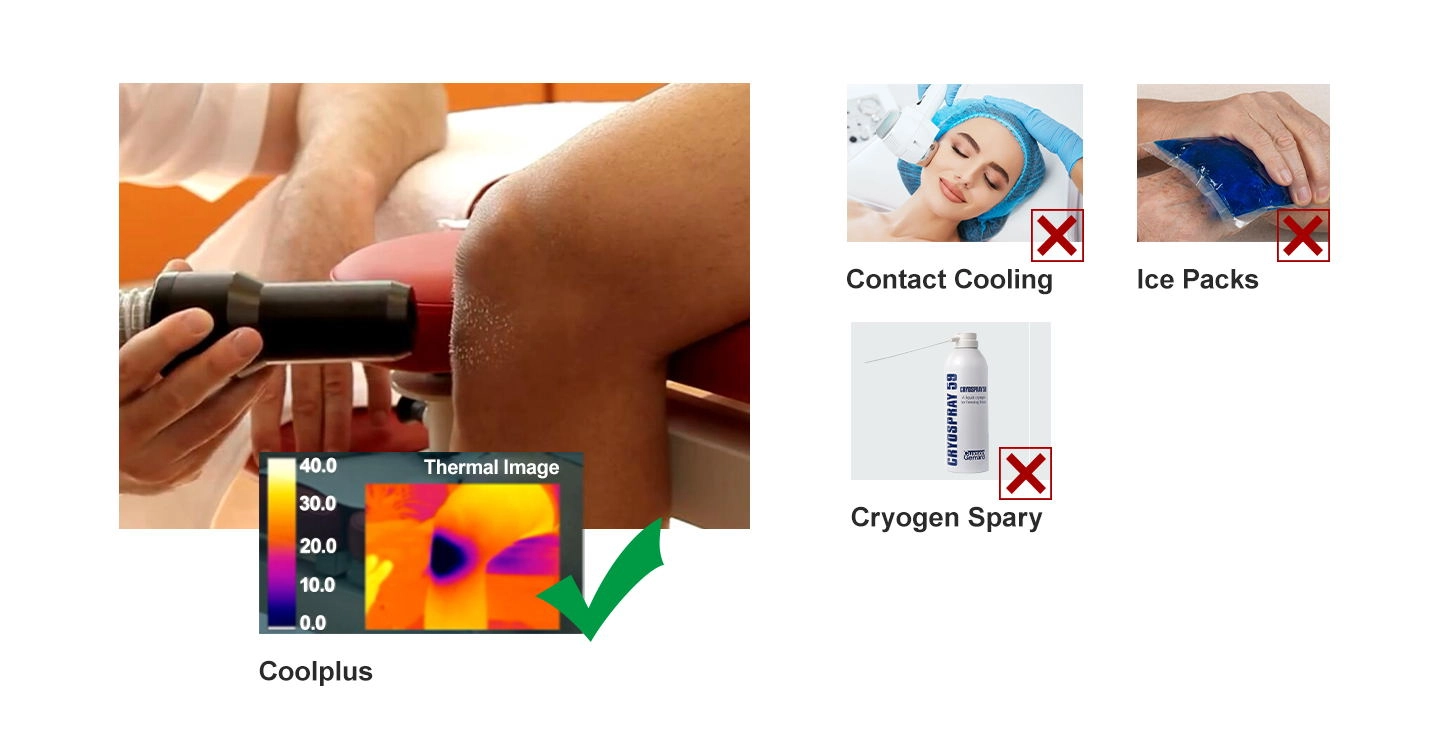In aesthetic medicine, new tools have made beauty treatments more effective and way more comfortable. Skin cooling devices are now a go-to for clinics using lasers or energy-based procedures. They keep patients feeling good and safe by cutting down on heat-related risks. Plus, they help doctors deliver amazing results. This article looks at the real benefits of skin cooling devices, the different types out there, and why they’re a big deal for patients and clinics alike.

Why Skin Cooling Is a Must
How Heat Plays a Role in Treatments
Lasers and energy-based treatments use heat to do their job, like boosting collagen, clearing dark spots, or getting rid of hair. But that heat can hurt the skin around the target if it’s not managed well. Cooling steps in to save the day. It protects the skin’s surface while letting the heat work its magic deeper down.
What Happens Without Cooling (Ouch, Redness, Burns, Bruises)
Without cooling, treatments can hurt—a lot. Patients might deal with redness that sticks around, burns from too much heat, or bruises, especially in sensitive spots. These issues can make people unhappy with their experience. They might even skip their next appointment.
How Cooling Wins Trust and Smiles
Adding a skin cooling device makes treatments feel so much better. Patients are more comfortable, which builds trust in the clinic. Happy patients are more likely to stick with their treatment plan and spread the word to friends.
Types of Skin Cooling Options
Contact Cooling (Cold Tips, Chilled Tools)
Contact cooling uses a cold surface, like a sapphire-tipped tool or a chilled applicator, pressed right on the skin during treatment. It keeps the temperature just right at the spot. You’ll see this a lot in laser hair removal.
Air Cooling (Cool Breezes)
Air cooling blows cold air across the skin before, during, and after treatment. It doesn’t touch the skin, so it’s perfect for big areas like legs or backs.
Cryogen Spray Cooling (Quick Cold Spritz)
Cryogen spray cooling spritzes cold liquid on the skin right before a laser hits. This fast trick protects the skin’s surface without messing with the laser’s deeper work.
New Ideas (Liquid Cooling, Combo Systems)
Newer options, like liquid cooling, pump coolant through tools to keep things steady. Combo systems mix methods, like contact and air, to make treatments safer and more comfortable for all kinds of procedures.
Quick Peek at Cooling Options
| Option | Why It’s Awesome | Downsides | Best For |
|---|---|---|---|
| Contact Cooling | Super precise temperature control | Needs setup, touches skin | Hair removal, spot fixes |
| Air Cooling | Covers big areas fast, no touching | Not as precise, can be loud | IPL, full-body laser |
| Cryogen Spray Cooling | Great skin protection, perfect timing | Needs supplies, pricier | Vascular work, CO₂ laser |
| Liquid/Combo Cooling | Steady cooling, works for lots of uses | Costs more upfront | Advanced, multi-purpose treatments |
Real Wins for Patients
Less Pain, Way More Comfort
Skin cooling devices make treatments hurt less. They cool the skin before the heat hits, calming the nerves. This makes procedures like laser resurfacing or IPL photofacials feel like a breeze.
Stronger Protection from Heat
Cooling shields the skin’s top layer from the device’s heat. This is huge for darker skin tones, which can get pigment issues more easily.
Faster Healing, Fewer Problems
Cooling cuts down on swelling and redness where the treatment happens. Patients heal quicker and see fewer side effects after their session.
Great for Sensitive or Darker Skin
For folks with sensitive skin or more melanin, cooling is a lifesaver. It lets doctors use stronger settings safely, avoiding burns or color changes.
Why Clinics Can’t Get Enough
Safer Treatments, More Choices
With great cooling devices, clinics can offer intense treatments without worry. This means they can treat all sorts of patients, from pale to dark skin, with confidence.
Keeping Patients Happy and Coming Back
Comfy treatments mean loyal patients. People who feel good during their visit are more likely to come back or try new services. They might even tell their friends about the clinic.
Following the Rules
Lots of places have strict safety rules for aesthetic treatments. Using dependable cooling devices helps clinics stay on the right side of those rules. It also shows they care about doing things properly.
How Cooling Devices Compare in Real Life
Cost and How They Work
Clinics have to think about costs now and later. Cryogen systems protect well but need supplies, which can add up. Air cooling uses plain air, so it’s cheaper to keep going.
Upkeep and Training
Contact devices need regular checks since they touch the skin. Air systems are simpler to maintain, but staff might need to learn how to adjust the air flow or distance for each treatment.
Finding the Right Fit
The best device depends on what a clinic needs. Some want speed, others precision or low costs. A good review of needs can point to the right choice. For example, Nubway has options like cryogen sprays or combo systems for different treatments.

Getting a top-notch skin cooling device isn’t just about making patients comfy—it’s about getting better results and building trust. As aesthetic clinics compete around the world, using safe, high-tech tools makes the best ones stand out. For reliable gear, from cryogen sprays to combo systems, take a look at Nubway’s lineup.
FAQ
Q: What’s the best skin cooling device?
A: It depends on the job. Cryogen sprays are great for short, strong pulses. Air cooling works for big areas. Combo systems give you options.
Q: Do cooling devices work for every skin type?
A: Yup. They’re especially helpful for sensitive or darker skin, reducing risks like burns or pigment changes.
Q: Can cooling devices speed up healing after lasers?
A: For sure. They cut down on redness and swelling, so patients recover faster.
Q: How do clinics choose between air, contact, or spray cooling?
A: Think about cost, treatment types, patient needs, and upkeep. A quick needs check helps pick the best one.
Q: Are skin cooling devices safe for everyday use?
A: When used right, they’re super safe. They usually meet global safety standards.





